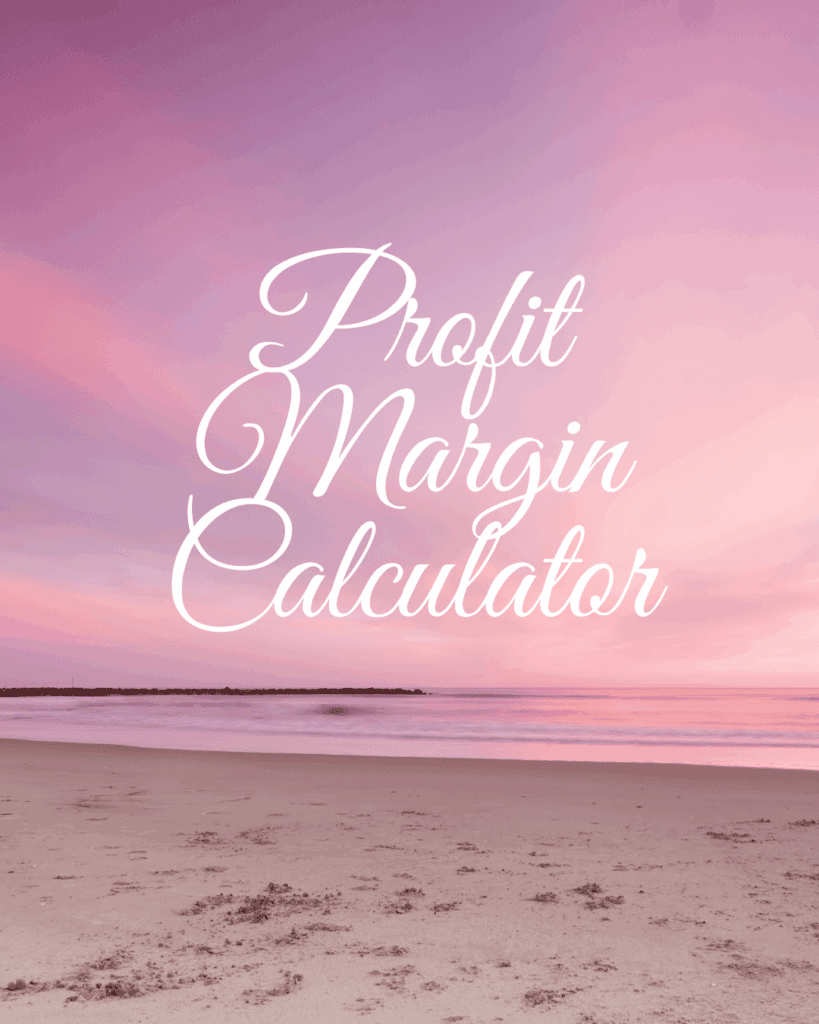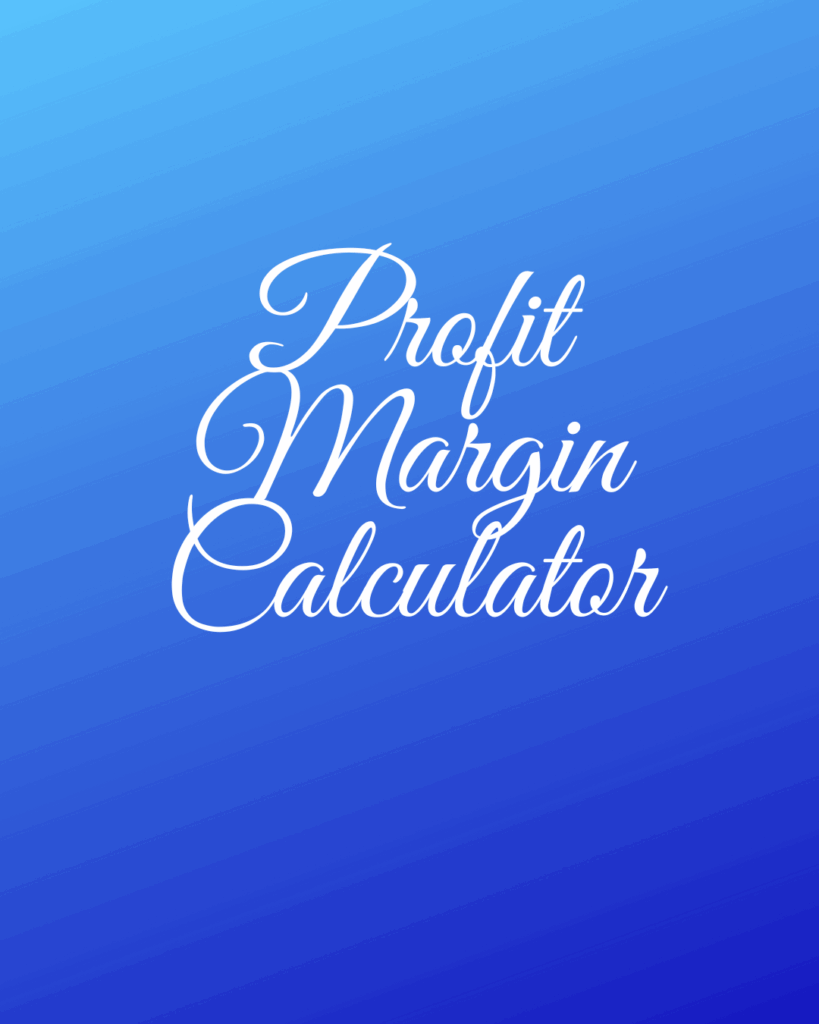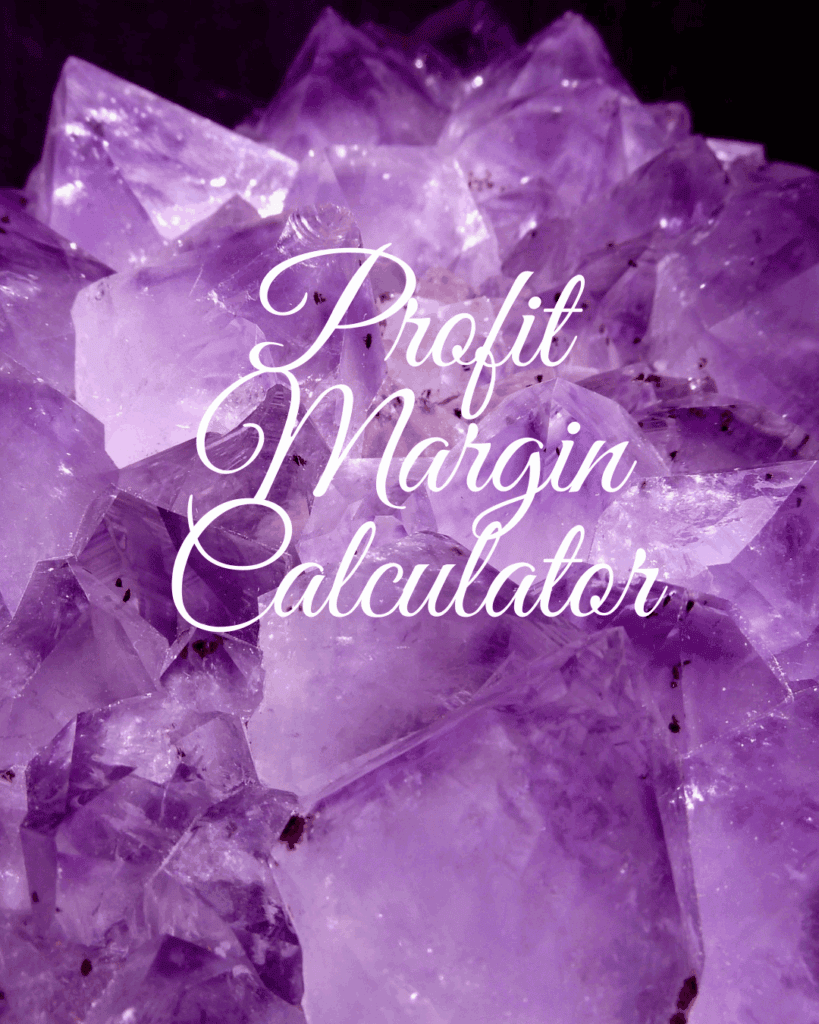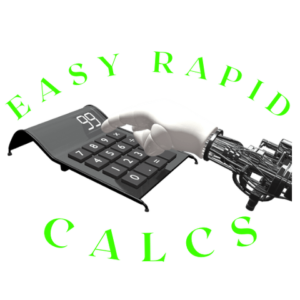Profit Margin Calculator
-Step Guide to Use the Profit Margin Calculator:
- Enter your:
- Total Revenue – Total income before any cost.
- Total Cost – Total expenses incurred.
- Click “Calculate” to see:
- Profit in dollars
- Profit margin percentage
- Visual breakdown chart (cost vs profit)
- Click “Export CSV” or “Export PDF” to download the report.
- Use “Reset” to clear the form and start again
Profit Margin Calculator
Profit margin is an often used measure of business profitability that measures how much of its revenues remain after all costs have been covered. Tracking this metric over time can provide insight into whether your company’s trajectory is progressing positively or negatively.

A margin calculator makes it possible to quickly and accurately determine your company’s profit margin by entering in total cost of goods sold and selling price/revenue generated for each item sold. This gives insight into your profitability as well as helps shape pricing strategies for future products or services offered by your business.
Cost of Goods Sold
Profit margin calculators are online tools designed to assist businesses in assessing the profitability of a product or service. By taking into account costs associated with selling goods and revenue streams, this calculator calculates a profit margin percentage which can then be expressed in percentage form. Furthermore, multiple products or time periods can be organized with this feature.
Cost of Goods Sold (COGS), also referred to as COGS, refers to the total sum spent on raw materials and labor used to produce goods or services for sale. This expense includes expenses such as raw material costs, labor costs and manufacturing overhead costs as well as storage and promotion expenses for such items or services. After deducting COGS from sales figures, gross profit percentage is then divided by total revenue multiplied by 100 and displayed on an Excel sheet or calculator.
Companies use gross margin to set their selling prices, which determine how much money is expected from each sale. Understanding how to calculate gross profit margin is vital in making accurate business decisions; an increased gross profit margin indicates that your company is producing enough revenue to cover all operating expenses while investing in growth opportunities.
Conversely, a low gross profit margin could indicate that your company is undercharging for its goods or services, in which case your company may need to reduce prices or increase production to generate enough profit for itself.
Net profit margin refers to the percentage of total sales revenue remaining after all expenses have been covered for an organization, including COGS (cost-of-goods-sold), taxes, warehouse space rent payments, advertising costs and interest payments on loans have been deducted. To calculate net profit the formula is straightforward: total revenue minus total expenses – COGS – depreciation amortization interest income 100 or alternatively total revenue/total profit
No matter which profit margin calculation method you employ, the process remains consistent. Begin by identifying total revenue over a given time period. Subtract all operating expenses from this figure before dividing by sales revenue to arrive at net profit – divide by 100 then multiply this percentage value.
Revenue
Revenue is the total amount that your business receives from selling goods or services, including fees, charges, taxes collected from customers as well as payments made from other businesses for using your products or services. Revenue helps determine your profit potential from sales; without sufficient revenue your business won’t be able to expand into new projects or grow as expected.
Profit Margin (PM) measures the difference between production costs and selling prices of products or services, and their final selling prices. It can be calculated by dividing net income (after all costs have been deducted) by gross profit; higher margins indicate more successful businesses; ideal profit margins fall between 20%-50% while any lower margin indicates you may need to cut costs to generate more profits.
Profit margin calculators are invaluable tools for analyzing the profitability of any business. With them you can monitor and adjust production or acquisition costs while comparing performance against that of competitors, forecast revenue growth and plan ways to reach financial goals.
To calculate your profit margin, first enter the total sales revenue your company generated during a specified timeframe. Next, input all costs associated with selling goods – including labor costs, raw material costs, manufacturing overhead expenses etc. When you are done entering these details and selecting “Calculate”, your calculator will produce an optimal sales price to maximize profits.
The Profit Margin Calculator is an easy-to-use tool designed to calculate gross, operating, and net profit margins of any product or service. The calculator displays results in percent format to make them simpler to interpret and understand; additionally it gives an in-depth breakdown of each metric component that makes up that calculation.
Expenses
Profit margin is an indicator of how much of your revenue reaches the bottom line, making it an indispensable metric for businesses and identifying areas in which money may be being lost or where potential increases in profits exist. Profit margin can be calculated using various techniques, including gross, operating and net profit margin calculations; to do this subtract your costs from revenue then divide by total revenue for an accurate measurement.
Expenses are costs related to producing your products or services, such as raw materials, labor costs and operating expenses such as rent, utilities and advertising costs. Our profit margin calculator offers an efficient means for calculating gross, operating, net and profit margin calculations as well as various financial ratios.
Profit margins can be used as an indicator of business health and growth. They reveal how much revenue your product or service is generating and help inform marketing decisions. Comparing profit margins against those of competitors provides insight into whether prices are competitive enough.
To maximize profit margin, it is vital that expenses are effectively managed. An insufficient profit margin indicates too high expenses; making changes like cutting unnecessary spending or reducing overhead expenses can significantly boost profitability. Utilizing smart tools such as expense automation and real-time financial dashboards provides transparency that allows for easier identification of inefficiencies.
Gross Profit Margin (GPM), calculated as revenue minus cost of goods sold, is one of the primary metrics used to assess profitability. Similar to markup, GPM does not account for additional operational costs such as debt payments, taxes or unexpected one-time expenses that might occur during its calculation. GPM is usually reported as a percentage of revenue and used both small and large companies alike to monitor profitability and performance as it’s considered when applying for financing loans from lenders.
Profit
Profit margin is the proportion of revenue that reaches your bottom line after taking into account expenses and taxes. A higher profit margin indicates efficient operations and charging a fair price for product/service offerings; conversely, lower margins could signal potential issues with business model or market conditions; using a calculator is an invaluable way to assess financial performance and make data-driven decisions that impact bottom lines.
Calculating profit margin is straightforward: simply divide your total cost by your sales to determine your profit margin for each sale. Knowing this figure is key when setting pricing for products and services to ensure that all of your costs are covered while still earning desired profits.

Profit margins provide your business with the resources it needs to expand and succeed, such as paying for marketing expenses, extra staff or essential software. They will also allow you to keep prices competitive while still realizing a healthy return on investment.
To calculate your profit margin, begin by entering the total wholesale cost and markup/profit percentage that you intend to charge on each item sold, followed by “Calculate”. Once complete, a recommended sale price and gross profit margin estimate will appear as results.
PSA software can assist in more accurately calculating your profit margin by gathering all of the necessary data in one convenient place, eliminating the need to manually calculate margins from receipts and time sheets. In addition, PSA software enables project planners and decision makers alike to predict project profit margins, helping them plan ahead and make informed decisions.

No matter the size or scope of your business, understanding your profit margin is valuable information for all involved. Your profit margin indicates how much of each dollar earned through sales actually contributes to actual profit and can help identify areas for improvement as well as compare how your company stacks up against its rivals and if your goals for the year will be achieved.
